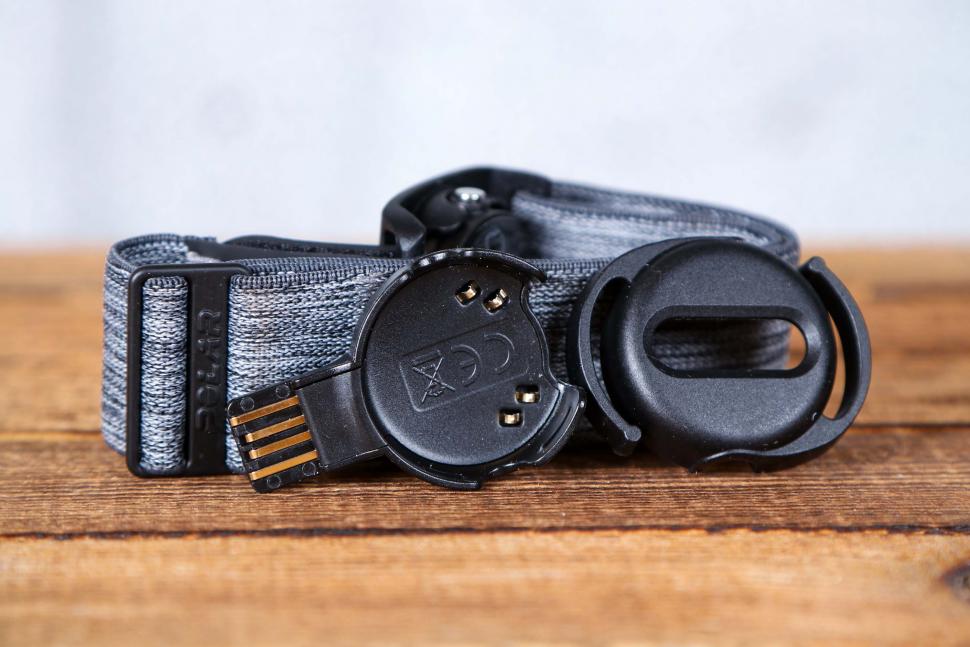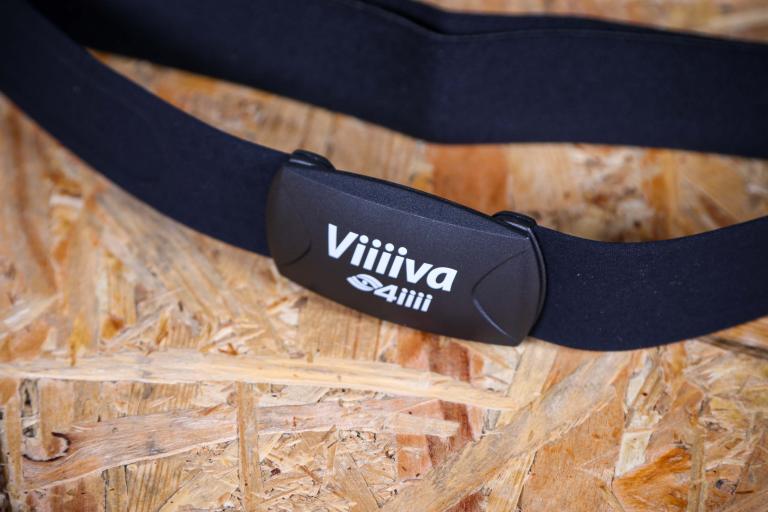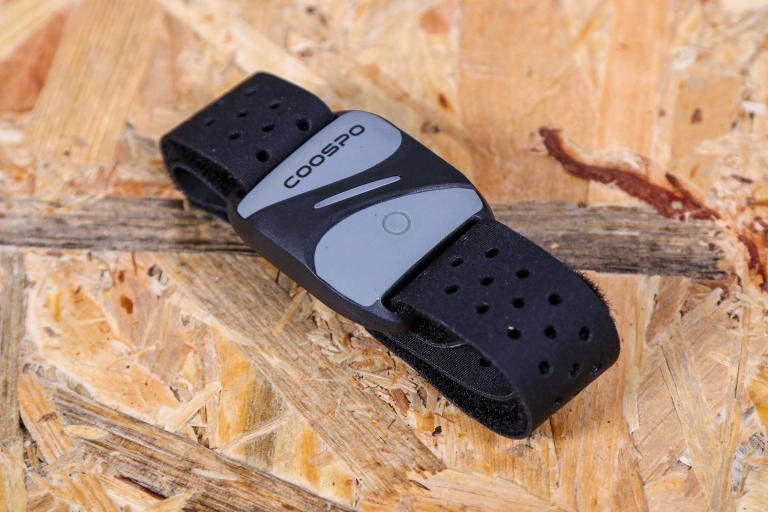- News
- Reviews
- Bikes
- Accessories
- Accessories - misc
- Computer mounts
- Bags
- Bar ends
- Bike bags & cases
- Bottle cages
- Bottles
- Cameras
- Car racks
- Child seats
- Computers
- Glasses
- GPS units
- Helmets
- Lights - front
- Lights - rear
- Lights - sets
- Locks
- Mirrors
- Mudguards
- Racks
- Pumps & CO2 inflators
- Puncture kits
- Reflectives
- Smart watches
- Stands and racks
- Trailers
- Clothing
- Components
- Bar tape & grips
- Bottom brackets
- Brake & gear cables
- Brake & STI levers
- Brake pads & spares
- Brakes
- Cassettes & freewheels
- Chains
- Chainsets & chainrings
- Derailleurs - front
- Derailleurs - rear
- Forks
- Gear levers & shifters
- Groupsets
- Handlebars & extensions
- Headsets
- Hubs
- Inner tubes
- Pedals
- Quick releases & skewers
- Saddles
- Seatposts
- Stems
- Wheels
- Tyres
- Health, fitness and nutrition
- Tools and workshop
- Miscellaneous
- Buyers Guides
- Features
- Forum
- Recommends
- Podcast
review
 Polar Verity Sense Optical Heart Rate Sensor
Polar Verity Sense Optical Heart Rate Sensor£86.50
VERDICT:
Excellent rechargeable LED-based sensor with extra features for swimming and running
Comfortable
Accurate
Versatile – works for swimming and running too
Decent battery life
Wacky charge cradle
Weight:
23g
Contact:
At road.cc every product is thoroughly tested for as long as it takes to get a proper insight into how well it works. Our reviewers are experienced cyclists that we trust to be objective. While we strive to ensure that opinions expressed are backed up by facts, reviews are by their nature an informed opinion, not a definitive verdict. We don't intentionally try to break anything (except locks) but we do try to look for weak points in any design. The overall score is not just an average of the other scores: it reflects both a product's function and value – with value determined by how a product compares with items of similar spec, quality, and price.
What the road.cc scores meanGood scores are more common than bad, because fortunately good products are more common than bad.
- Exceptional
- Excellent
- Very Good
- Good
- Quite good
- Average
- Not so good
- Poor
- Bad
- Appalling
The Polar Verity Sense optical heart rate sensor uses LEDs to measure your pulse through your skin. It provides data that's comparable to an old-school chest strap sensor but it's more comfortable. It can be used to record your heart rate without a phone or bike computer, and if there's more to your sporting life than riding bikes it'll record your swimming efforts and any other activity too. It's excellent, up there with the best heart rate monitors in our guide.
The Verity Sense measures heart rate using a technique called photoplethysmography or (mercifully) PPG for short. It produces accurate heart rate measurement compared to a chest strap, though its readings do seem to be slightly delayed.
The purple line here is from the Polar, the blue from a Garmin chest strap. As you can see, the Polar line lags by a few seconds. That's only going to be a problem if you're training with heart rate and not power, and trying to do fairly short intervals at a particular heart rate. A five-second delay in a thirty-second effort is going to be annoying; for a five-minute interval, not so much.
Overall, though, the data tallies very closely. My average heart rate in this session was 121.08bpm according to the Garmin strap, 121.27bpm according to Polar.
And it couldn't be easier to use. Strap it snugly round your forearm or biceps, hold down the button until the blue light flashes, and you're away.
My Garmin devices and my iPhone had no problem finding it via ANT+ or Bluetooth connections. Pro tip: wear the Verity Sense so that you can read the Polar logo. That way the blue LED points toward you and you can see what's happening when you press the button.
Unlike cheaper and more basic PPG sensors, the Polar Verity Sense has a couple of extra functions you might find useful. Once it's powered up, a short press of the button cycles through Recording mode and Swimming mode. As the name suggests, Recording mode stores your heart rate data in the unit rather than transmitting it to a device. Swimming mode does the same, but estimates the distance you've swum according to a setting in Polar Flow for the lap length you're swimming, detecting your turn-arounds at the end of each lap. The included goggle mount means you can wear the Verity Sense somewhere it won't be affected by being slapped against the water with each arm stroke, which should help with accuracy.
The device that's receiving your heart rate data doesn't have to be on your person because the Polar Verity Sense has a transmit range of a claimed 150m, so you can put your phone in the middle of a running track, or by the side of the pool and it'll pick up the signal. I didn't test this because it's just not part of any cycling use case except maybe track riding (and then you'd just use a handlebar-mounted computer surely), but it's reported to work fairly well thanks to the metal ring in the mount acting as a Bluetooth aerial extender.
Features & details
As I said earlier, the Polar Verity Sense measures heart rate using photoplethysmography, PPG for short. In the last few years PPG sensors have popped up everywhere. If you've got any sort of recent fitness tracker or smartwatch, odds-on it's got LEDs on the back that shine into your skin, and photosensors that use the reflections to measure changes in volume to your blood vessels as your heart beats. Bosh – pulse measurement.
Chest straps use electrocardiography to detect the electrical signals from your heart as it beats, and last ages on a CR2032 coin cell because this passive detection doesn't use much power. PPG sensors use more power so they're only really viable if they're rechargeable.
The Verity Sense has six LEDs where many PPG sensors have just two. Polar implies this is better, but doesn't explicitly say so. You might expect all those LEDs would reduce the battery life, but Polar claims 30 hours between charges, which is 10 more than the two-LED Coospo HW807 and 18 more than Polar's own OH1.
The Verity Sense connects to your devices via Bluetooth (it has two channels so can connect to two Bluetooth devices simultaneously) or good old ANT+.
Initial set-up is via the Polar Flow smartphone app, which asks you for data such as your age, weight, sex, activity level and so on. You can use the Verity Sense to just send your heart rate to an ANT+ or Bluetooth bike computer without doing this, but the setting up with Polar Flow involves updating to the latest firmware, and that's always a good idea. If you want to use the recording or swimming modes then setting up with Polar Flow is compulsory.
In the box you get the Verity Sense unit itself, a USB charge cradle (see my recent blog post for my thoughts on the silly proliferation of USB connectors and cradles), a strap to hold it round your arm, a swimming goggles mount, a mesh bag to keep everything in, and two sheets of paper with tiny type: a getting started guide and – even bigger – a compliance and safety information sheet.
Value
The Polar Verity Sense is pricier than the CooSpo HW807 reviewed last year, but it has functions the CooSpo unit lacks.
There's some overlap in the feature set with Garmin's £120 HRM-Pro Plus, which Stu tested last month, if chest straps are still on your heart rate radar.
If you want a heart rate sensor that'll work on both your arm and your chest, there's the Myzone MZ-Switch, but it's really quite spendy at £140.
Who should buy the Polar Verity Sense?
The main target user here is clearly someone who doesn't like chest strap heart rate sensors. That's quite a lot of people, which is why PPG sensors have proliferated in the last few years, and I count myself in that number, which is why I've switched to PPG sensors in the last year or two; they're just less hassle.
Multi-sport folks will appreciate the Verity Sense's versatility, though if you ride and run you might be better off spending an extra £40 for a Garmin Forerunner 45, which gets you GPS tracking and watch functions as well as heart rate.
Verdict
Excellent rechargeable LED-based sensor with extra features for swimming and running
If you're thinking of buying this product using a cashback deal why not use the road.cc Top Cashback page and get some top cashback while helping to support your favourite independent cycling website
road.cc test report
Make and model: Polar Verity Sense Optical Heart Rate Sensor
Size tested: One Size
Tell us what the product is for and who it's aimed at. What do the manufacturers say about it? How does that compare to your own feelings about it?
It's a heart rate sensor that uses LED lights to detect your heartbeats rather than the heart's electrical activity.
Polar says:
Polar Verity Sense is an optical heart rate monitor that provides you with maximum freedom of movement and multiple options for viewing and recording your workouts. With Bluetooth®, ANT+, and internal memory, you can connect Polar Verity Sense to a sports watch or app to see your workout in real time, or view your data afterwards.
Connect Verity Sense to your phone or watch to see your data in real-time, or record your session so you can relive it at a more convenient time – you make the rules.
Internal Memory
Concentrate on your flow.
When you want to focus on your workout, Polar Verity Sense will save the session to its memory so you can access the data when you want it.
Multiple Connectivity Options
Use solo, with a phone, or with your sports watch, plus a whole bunch of gym equipment. With two simultaneous Bluetooth connections and ANT+ broadcast, you're really spoilt for choice.
Any sport. Any time. Quantified.
With a detachable sensor and handy swimming goggle strap clip, you have a device you can wear on your arm, temple, or just about anywhere – all you have to do is pick a sport.
Optical heart rate tracking
Track every beat.
Capture your heart rate with Polar's high-quality 6-LED optical heart rate solution measuring every beat.
Swimming Mode
Get all of your data in the pool.
Track your heart rate, pace and distance whilst in the water – and do it comfortably with the swimming clip keeping Verity Sense securely in place.
Polar Flow
More than a sensor.
Set your goals, plan your workouts, and track your progress with all of the data from your body synced automatically.
Tell us some more about the technical aspects of the product?
From Polar:
Battery life: Up to 30h training on one charge.
Water-resistant: Up to 50 metres.
Broad cast range: Up to 150m
Memory: 16MB
Rate the product for quality of construction:
8/10
Rate the product for performance:
9/10
The only downside is the slight lag compared to an ECG chest strap.
Rate the product for weight (if applicable)
9/10
Not that it really matters much, but at 23g for the strap and sensor it's half the weight of a chest strap (46g).
Rate the product for comfort (if applicable)
10/10
It's reet comfy.
Rate the product for value:
6/10
There are cheaper PPG heart rate sensors, but they don't have the Verity Sense's extra functions, so it's decent value.
Tell us how the product performed overall when used for its designed purpose
Very well.
Tell us what you particularly liked about the product
Comfort and ease of use.
Tell us what you particularly disliked about the product
Nothing.
How does the price compare to that of similar products in the market, including ones recently tested on road.cc?
It's pricier than the CooSpo HW807 reviewed last year, but it has functions the CooSpo unit lacks. There's some overlap in the feature set with Garmin's £120 HRM-Pro Plus if chest straps are still on your heart rate radar. If you want a heart rate sensor that'll work on both your arm and your chest, there's the Myzone MZ-Switch but it's really quite spendy at £140.
Did you enjoy using the product? Yes
Would you consider buying the product? Yes
Would you recommend the product to a friend? Yes
Use this box to explain your overall score
This is simply an excellent, easy-to-use little widget.
About the tester
Age: 56
I usually ride: Scapin Style My best bike is:
I've been riding for: Over 20 years I ride: Most days I would class myself as: Expert
I regularly do the following types of riding: commuting, touring, club rides, general fitness riding, mtb,
John has been writing about bikes and cycling for over 30 years since discovering that people were mug enough to pay him for it rather than expecting him to do an honest day's work.
He was heavily involved in the mountain bike boom of the late 1980s as a racer, team manager and race promoter, and that led to writing for Mountain Biking UK magazine shortly after its inception. He got the gig by phoning up the editor and telling him the magazine was rubbish and he could do better. Rather than telling him to get lost, MBUK editor Tym Manley called John’s bluff and the rest is history.
Since then he has worked on MTB Pro magazine and was editor of Maximum Mountain Bike and Australian Mountain Bike magazines, before switching to the web in 2000 to work for CyclingNews.com. Along with road.cc founder Tony Farrelly, John was on the launch team for BikeRadar.com and subsequently became editor in chief of Future Publishing’s group of cycling magazines and websites, including Cycling Plus, MBUK, What Mountain Bike and Procycling.
John has also written for Cyclist magazine, edited the BikeMagic website and was founding editor of TotalWomensCycling.com before handing over to someone far more representative of the site's main audience.
He joined road.cc in 2013. He lives in Cambridge where the lack of hills is more than made up for by the headwinds.
Latest Comments
- chrisonabike 6 min 43 sec ago
Are you sure it was electric- that sounds more like an energon monster?
- OldRidgeback 21 min ago
Interesting, tho they only take narrow 20" slick tyres. I'd want to be able to use 1.75 Maxxis DTHs.
- don simon fbpe 49 min ago
Who'd've thought that a certain whinging section (right whingers get uppity for calling them what they are) of society would resort to division,...
- Exup 2 hours 21 min ago
At least some justice is being done........
- BIRMINGHAMisaDUMP 2 hours 31 min ago
I imagine the Police treat bike theft as an insurance issue rather than a criminal issue. Can't blame them to be honest. The best thing is to use...
- David9694 2 hours 58 min ago
Police launch investigation into destruction of barber shop in Hythe High Street...
- ktache 11 hours 28 min ago
I'd love for them to put a number on that "inappropriate speed"
- Nick T 12 hours 20 min ago
They need to use some harder material for the cleat retention clip really, that's worn out long before any bearing has had a chance to fail on...
- yiipeeia 15 hours 11 min ago
I am 67 and I cycle with two groups during the year The Haddenham Easyriders International who ride during the summer on Thursday evenings, and The...









Add new comment
3 comments
I also have one of these and am generally pretty happy with it. It's worth the trade-off against a chest-strap HRM for me, which I find either are restrictive to breathing or tend to slide down my chest.
Accuracy is good, and there's only been one occasion when it's latched onto cadence while running instead of the true heart rate. On the bike it's always been spot on. I'm less impressed with battery life, which often has a tendency to dive unexpectedly despite showing green when turned on. It's not a faulty item because I returned the first one for doing the same.
They also drain the battery while in standby, so you have to get used to putting it on the charger the night before a ride. Having said all that, I wouldn't go back to the chest strap.
I have one of these and it's excellent, as is my Polar chest strap which takes replaceable batteries. I've had the Verity for over 2 years and it gives HR traces very similar to the chest strap on bike rides and hill walking and climbing. I will see how long the Verity lasts, and I have tried the same policy I use to prolong the life of the phone battery (3 1/2 years so far, and still seems the same battery endurance if I test it from 100%), which is to charge only to an estimated 80%, and to avoid full discharge
There are a number of HRMs suitable fir swimming that use replaceable batteries, even one from Polar (I know, it's the one I use). Buying electronics like this that will just end up in landfill because the battery's failed and can't be easily replaced is outrageous.